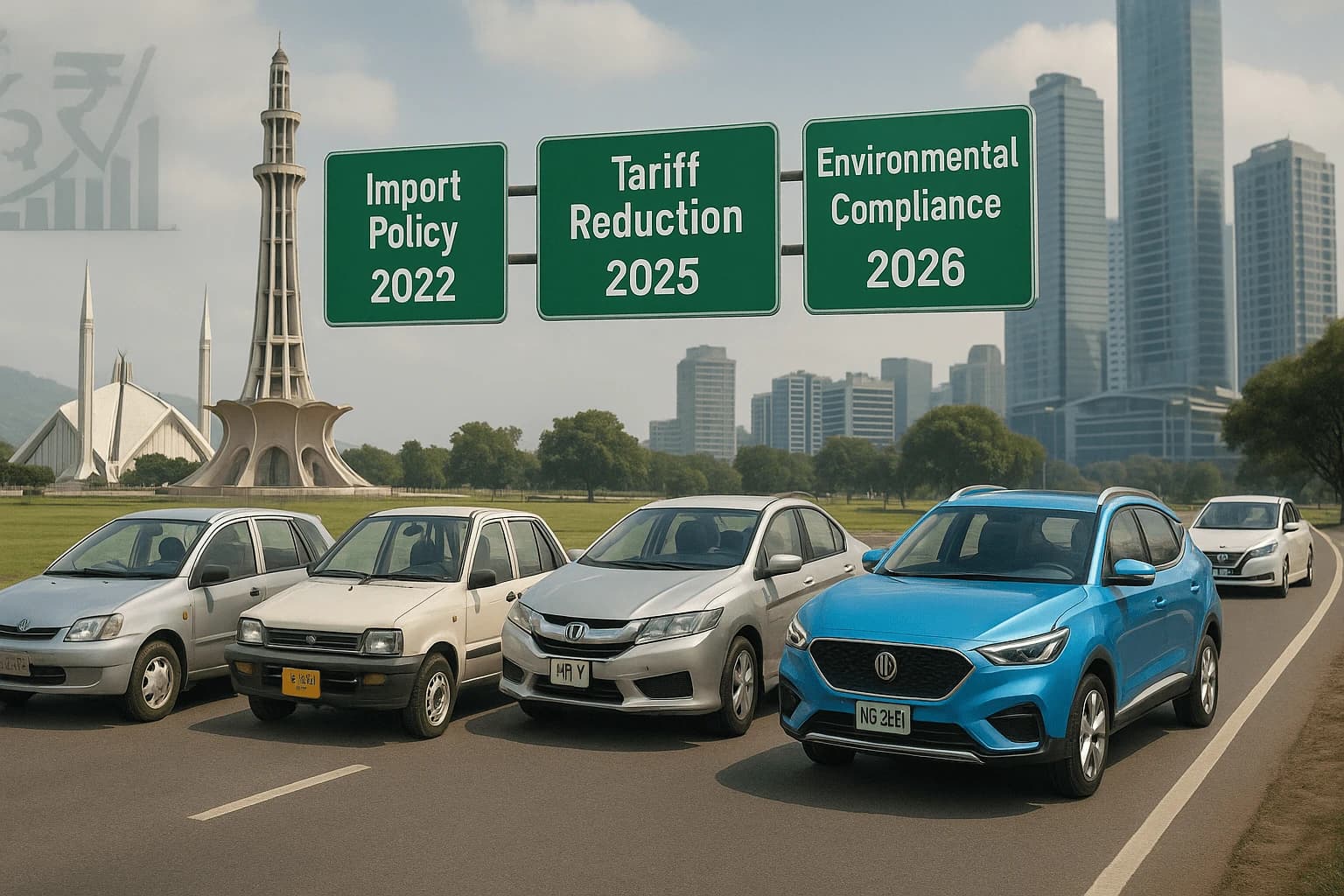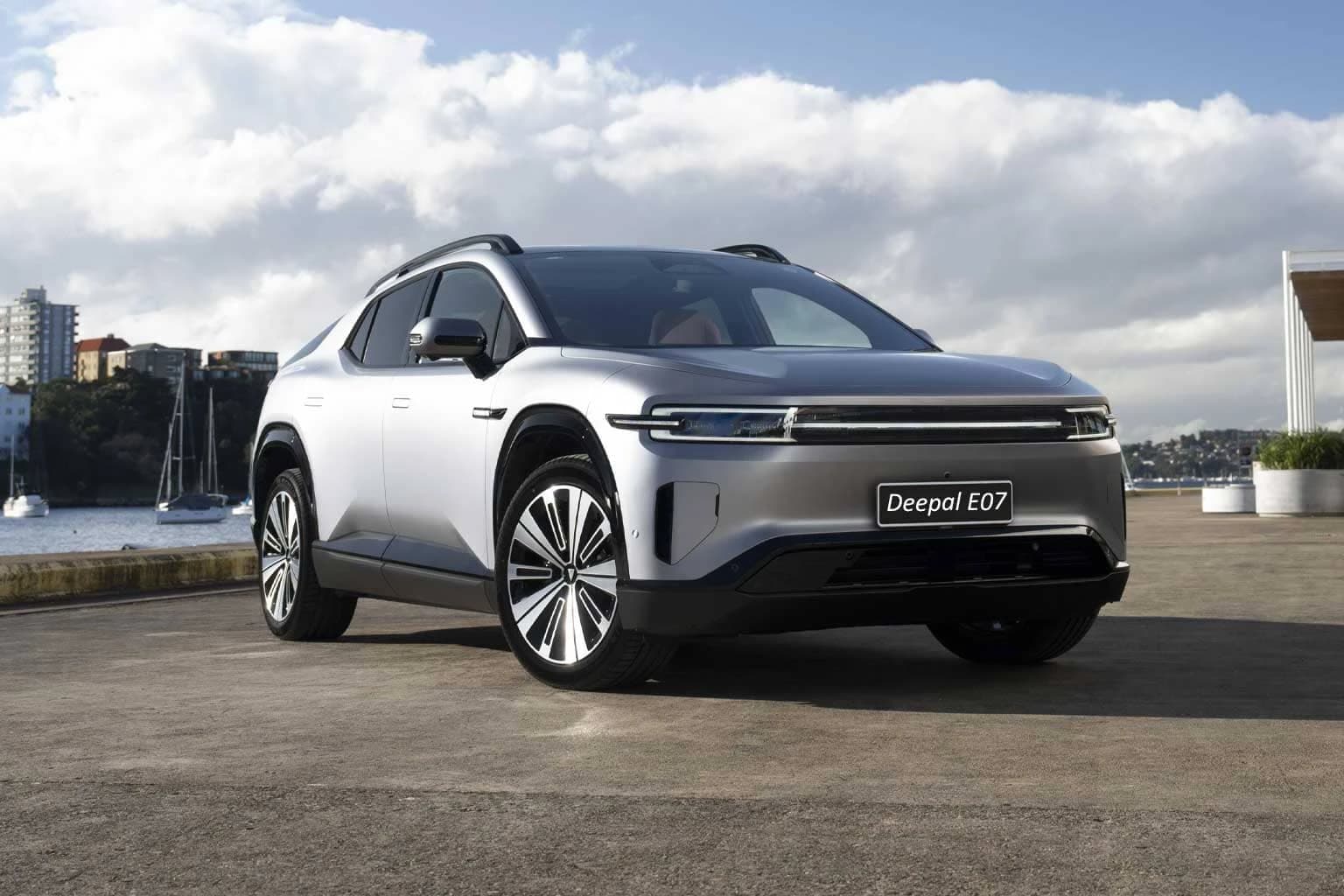
* All product/brand names, logos, and trademarks are property of their respective owners.
Pakistan’s automotive landscape has always been a dynamic and evolving story—one that mirrors the country’s economic ambitions and trade philosophies. From the bustling ports of Karachi to the showrooms of Lahore, the auto import policies in Pakistan have shaped not just the availability of cars, but also the dreams of millions of Pakistanis wanting to own a vehicle that suits their budget and lifestyle.
In recent years, these policies have been in a state of flux. Whether driven by global trade pressures, IMF agreements, or the persistent demand from Pakistani consumers for affordable, quality vehicles, the government’s stance on vehicle imports has oscillated between protectionism and liberalization.
For instance, schemes like the Personal Baggage Scheme, the Gift Scheme, and the Transfer of Residence facility have traditionally allowed overseas Pakistanis to bring in vehicles under certain conditions. While these schemes opened a window to international car markets, periodic revisions have sometimes made them more restrictive, with tighter age limits and higher duties.
The Import Policy Order 2022 marked a pivotal moment, aligning vehicle import policy with broader IMF-driven structural reforms. These changes not only impacted the duties on used cars but also signaled a move towards a more globally competitive automotive sector.
But what does the future hold? As we move into 2025-26, the government’s roadmap includes gradual tariff reductions on used vehicle imports, the introduction of environmental and safety compliance standards (moving beyond mere age limits), and a possible lifting of the ban on older used vehicles to expand consumer choices.
These upcoming policy shifts are poised to transform the market once again. Stay tuned to the Ministry of Commerce’s updates (👉 Ministry of Commerce, Pakistan) and the Federal Board of Revenue’s announcements (👉 FBR Pakistan) for the latest.
Whether you’re a car enthusiast, a potential importer, or an industry player, understanding these changes is key to navigating Pakistan’s auto market of tomorrow.
Pakistan’s journey with auto import policies is a fascinating tale that underscores the tension between economic protectionism and consumer demand. Let’s break down this evolution into three key phases:
In the early years, Pakistan’s vehicle import framework was centered around the Personal Baggage, Gift, and Transfer of Residence schemes. These were designed primarily to facilitate overseas Pakistanis—expatriates and returning residents—enabling them to bring in a car duty-free or at reduced rates.
Initially, there was little focus on environmental compliance or detailed safety checks. However, these schemes did offer much-needed relief to Pakistanis who wanted modern vehicles that local automakers couldn’t yet produce. While the schemes encouraged consumer access to quality vehicles, they also created a thriving market for used car imports—sometimes at the cost of nurturing the domestic auto industry.
For a deeper understanding, visit the FBR’s guide on import schemes (👉 FBR Import Schemes).
The 2010s marked a period of introspection and recalibration. Policymakers sought to protect local assembly plants and bolster domestic manufacturing. Age limits for imported used cars were capped—at one point, to three years for cars and five years for SUVs and heavy vehicles.
Moreover, regulatory duties were ramped up. The rationale? Shield local players like Pak Suzuki, Honda Atlas, and Indus Motors from overwhelming foreign competition, while also managing Pakistan’s current account deficit.
This balancing act led to spirited debates between auto consumers—who wanted variety and affordability—and local assemblers, who demanded stronger policy shields.
For more on this, check out Pakistan Automotive Manufacturers Association’s (PAMA) insights (👉 PAMA Official).
A major turning point came with the Import Policy Order 2022. This was more than just a policy tweak—it was a signal of Pakistan’s intent to modernize trade and align with IMF structural reforms.
Key changes included:
Revised duties on used and new vehicles
Stricter compliance for vehicle documentation
Greater clarity on Transfer of Residence and Personal Baggage guidelines
The policy also set the stage for a more gradual relaxation of import restrictions, aligning with Pakistan’s National Tariff Policy 2025–30.
For official details, you can explore the Ministry of Commerce’s auto sector updates (👉 Ministry of Commerce).
These milestones have set the stage for the next wave of policy updates—where environmental compliance, safety, and consumer choice are expected to take center stage.
The landscape of Pakistan’s auto import policies has never been static—it’s constantly adjusting to new economic realities, trade pressures, and consumer demands. Let’s take a closer look at where we stand today and what the future might hold.
The Import Policy Order 2022 and the accompanying tariff structures have had a profound impact on car imports. Regulatory duties remain high, with a combined customs duty, regulatory duty, and additional customs duty structure designed to balance local assembly protection and consumer access to affordable vehicles.
For instance, used vehicle imports under the Personal Baggage, Gift, or Transfer of Residence schemes still face tariffs ranging from 50% to over 100% of the car’s value—depending on engine size and year of manufacture. These high tariffs have kept imported vehicle prices elevated, nudging many consumers towards the local market.
Meanwhile, the age limit for used cars remains capped at three years for small cars—a policy meant to encourage newer, more environmentally friendly imports while safeguarding local manufacturers.
A more detailed analysis of the regulatory framework can be found at the FBR’s vehicle import FAQs (👉 FBR Vehicle Import FAQs).
Looking ahead, Pakistan’s auto import policy is poised for a significant shift. From 2026 onwards, policymakers aim to move away from simplistic age-based restrictions towards a compliance-based model. This model prioritizes:
Environmental standards (e.g., Euro 5/6 emissions compliance)
Safety features like airbags, ABS, and crash protection
Such changes mirror global trends and underscore Pakistan’s commitment to sustainable and safe transportation. This will also bring Pakistan closer to regional standards observed in markets like the UAE and Malaysia.
For those interested in technical details, the Pakistan Environmental Protection Agency (Pak-EPA) is expected to release new compliance checklists (👉 Pak-EPA).
Perhaps the most exciting development on the horizon is the gradual reduction of tariffs on used vehicle imports—a move aimed at making imported cars more affordable and accessible to Pakistani consumers. Starting in FY2025-26, the government plans to reduce the current premium tariffs by 10% annually, reaching near-parity with new car tariffs by 2030.
Simultaneously, discussions are ongoing about extending the permissible age of imported used vehicles from three to five years, further broadening consumer choices. These upcoming reforms could unlock a wave of affordable, quality vehicles in Pakistan’s auto market—especially for those seeking budget-friendly alternatives to locally assembled cars.
For updates, follow the Pakistan Institute of Development Economics (PIDE), which regularly publishes policy insights (👉 PIDE Reports).
The coming years promise to be a transformative time for Pakistan’s auto market, with policy changes that could tilt the scales in favor of consumers while also pushing the local industry to innovate and compete globally.
The story of Pakistan’s auto import policies is one of balancing aspirations and responsibilities. From the early days of facilitating vehicle imports for overseas Pakistanis to the more protectionist measures of the 2010s, and finally to the emerging landscape shaped by the Import Policy Order 2022 and beyond, the journey has been anything but linear.
These evolving policies are more than just a set of rules—they are a reflection of Pakistan’s broader economic ambitions and the drive to ensure sustainable growth. For consumers, the shift towards tariff reductions and extended vehicle age limits spells exciting possibilities: greater choice, more affordable options, and access to modern, environmentally compliant vehicles that were previously out of reach.
For local assemblers and dealers, these changes present a challenge but also an opportunity. The upcoming compliance-based import model means they’ll need to focus on safety and environmental standards—an evolution that can only strengthen Pakistan’s automotive sector in the long term.
As we look to the future, one thing is clear: staying informed is critical. Keep a close eye on updates from trusted sources like the Ministry of Commerce (👉 www.commerce.gov.pk) and the Federal Board of Revenue (👉 www.fbr.gov.pk) to stay ahead of the curve.
For those considering importing a vehicle, this is a great time to start planning. Do your research, understand the new rules, and leverage the changing landscape to make the most of your investment.
The timeline of change in Pakistan’s auto import policies is a testament to the country’s resilience and willingness to adapt. As these policies continue to evolve, they’re likely to unlock new opportunities and shape the future of mobility in Pakistan.

18 November 2025
No comments yet. Be the first to comment!